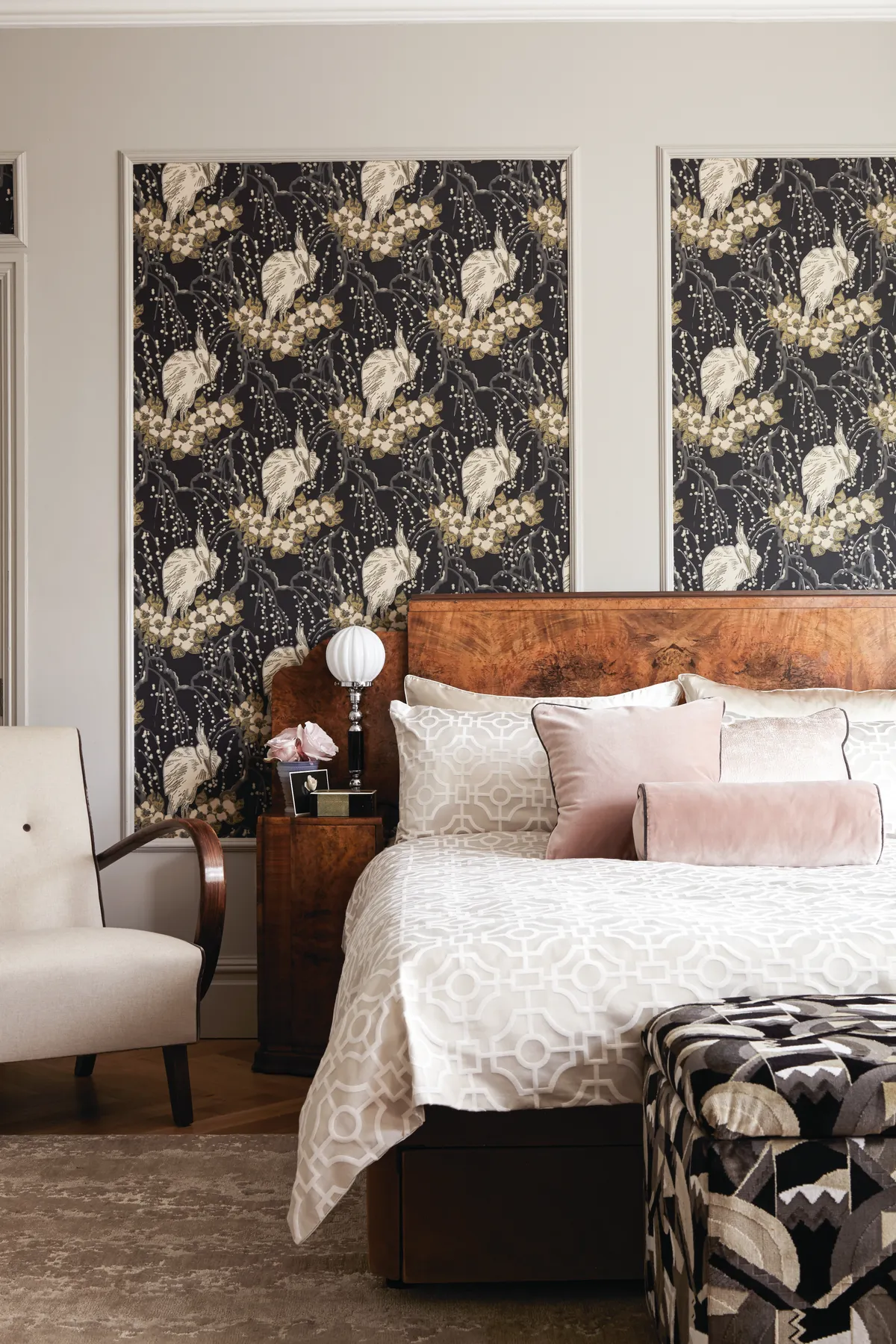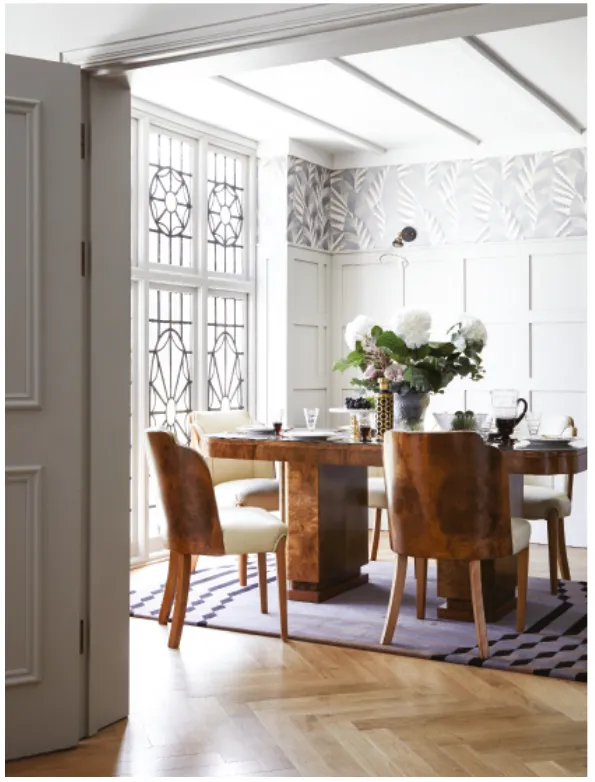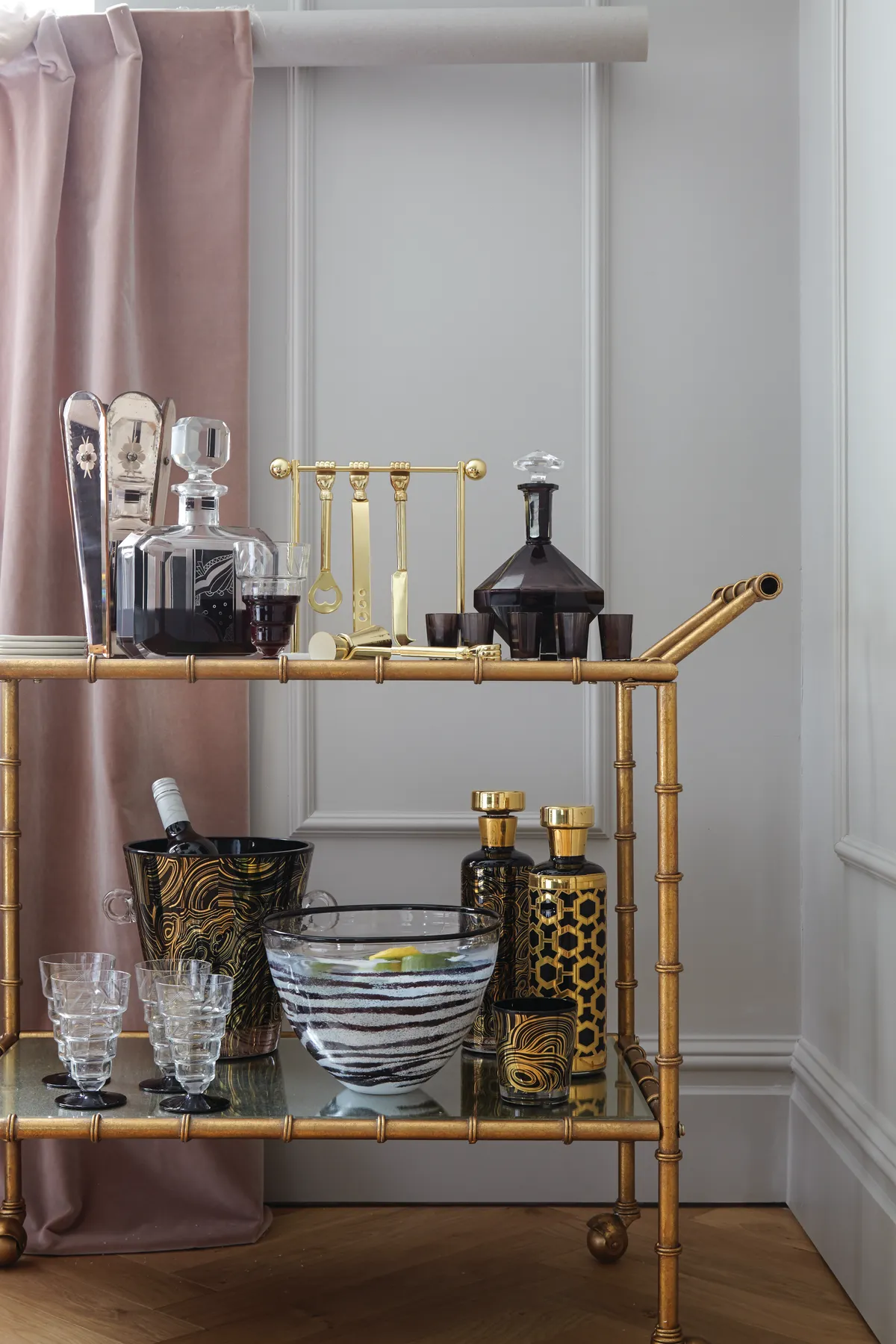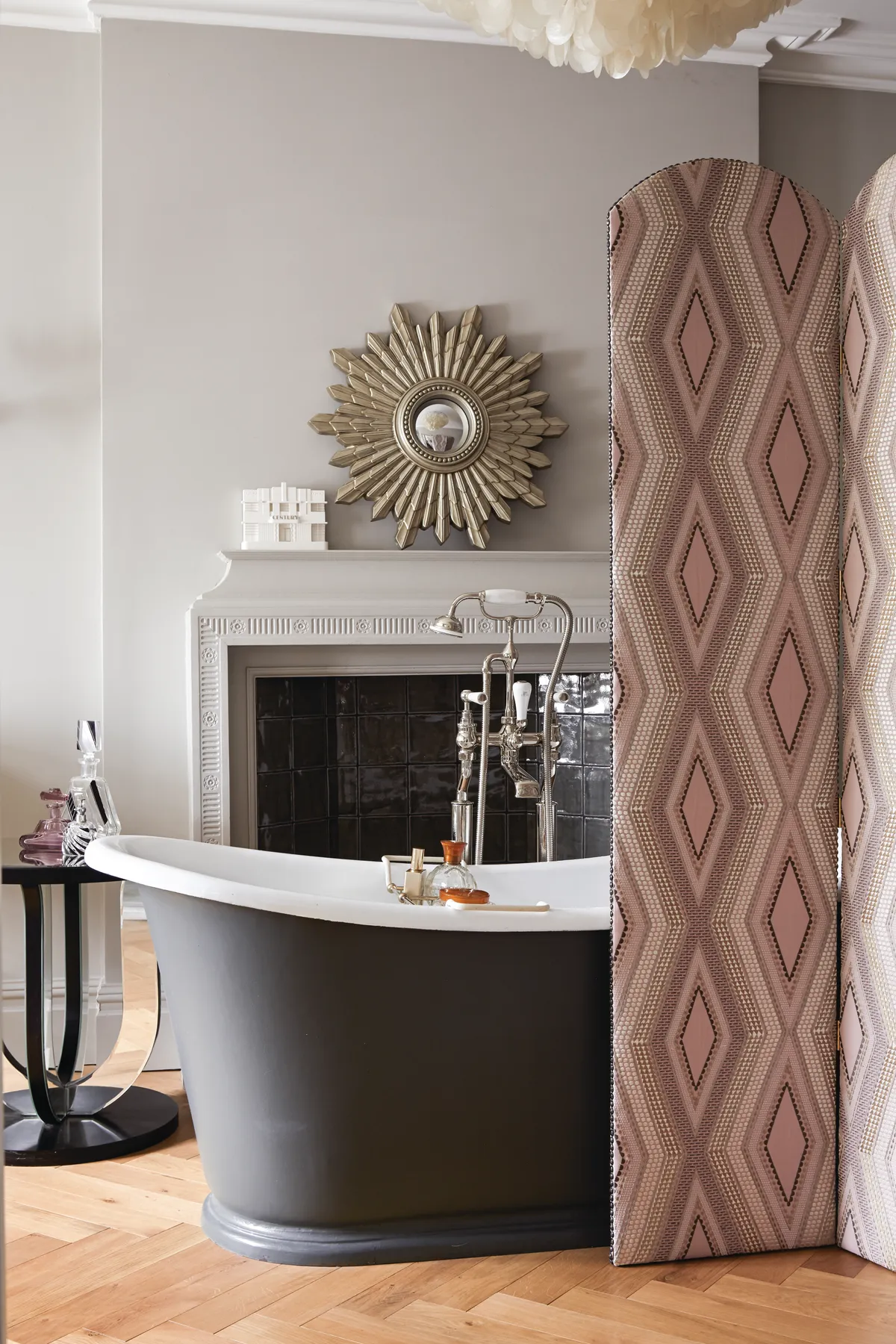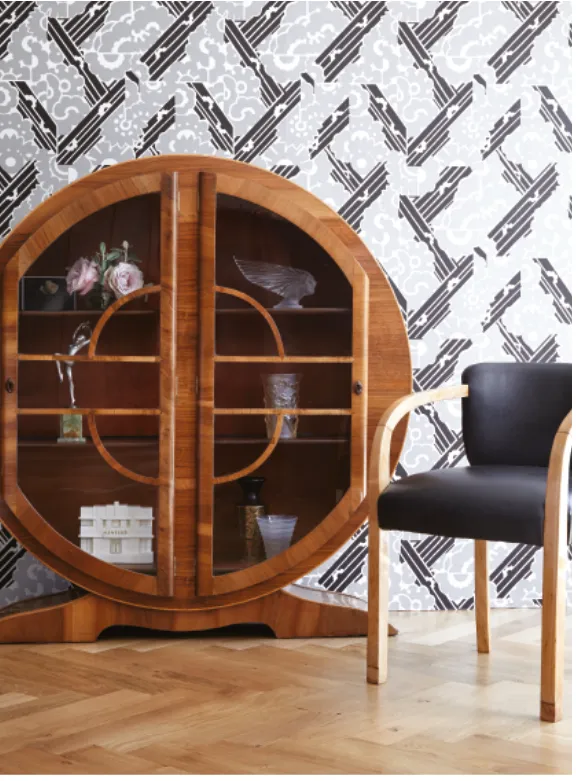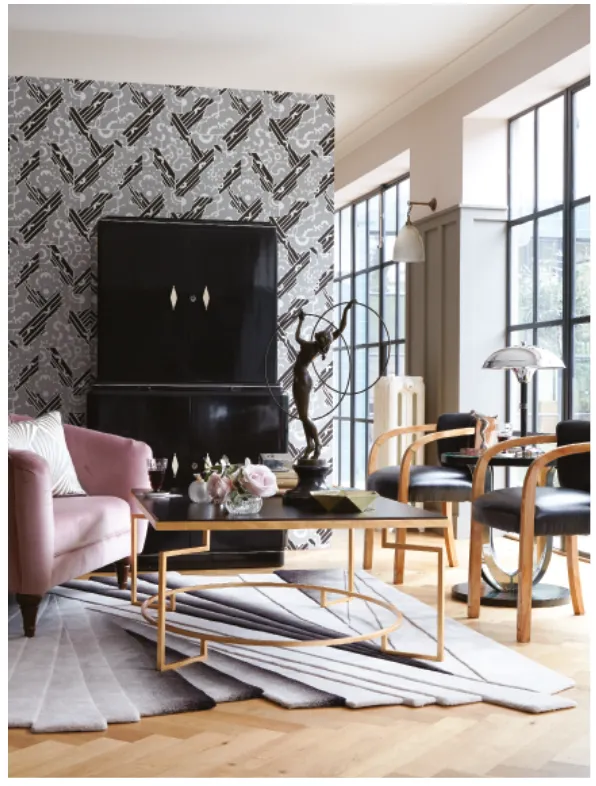Fun, escapism and optimism – never were these attributes better captured in design than in the period between the two world wars, which has come to be known as the Art Deco era.
Having just left behind the terrors of the First World War, Europe and America were ready to dance, party and forget; to listen to jazz music and throw themselves into ‘cocktails and laughter’ as Noel Coward put it. ‘It was, to a large extent, the first style of a new age,’ says author, broadcaster and Art Deco specialist Eric Knowles. ‘People were keen to embrace a fresh beginning, having suffered through the war. They were now more aware of the outside world by way of the cinema, and the glamorisation of Hollywood. And they had more freedom. For the bright young things of the 1920s, these were the Roaring Twenties.’
What emerged was a creative outpouring with a buoyant spirit that stretched from Art Deco’s birthplace in Paris to cities around the world, from Casablanca to Havana. It reached its zenith in those temples to progress that created the blueprint for the modern city: the skyscrapers of New York. Even as dark shadows began to fall across Europe, the movement was unstoppable, adopting the sleek lines and metal sheen of the fast-developing aeronautical industry and embracing the glamour and escapism of Hollywood.
It was a style that men and women dressed for and it was in the architecture of the age, certainly in America. You only have to see a skyscraper to imagine people dressed in the fashion. They wanted to emulate their idols from the silver screen, whether they were a New York socialite or a Lancashire milkmaid.
Eric Knowles
The term ‘Art Deco’ was adopted in the 1960s, to denote the design style represented at the 1925 Paris Exposition Internationale des Arts Décoratifs et Industriels Modernes. The idea was to put on a grand fair that would restore France’s pride in its decorative arts and reassert its pre-eminence in the global arena. In contrast to the Exposition Universelle of 1900, which had celebrated past glories, this exhibition would look to the future and showcase new ideas. Countries from around the world were invited to present their most cutting-edge designs.
Among the highlights of the French exhibits was the Hotel du Collectionneur, a pavilion designed by architect Pierre Patout and fitted out by leading French designers: with furniture by Émile-Jacques Ruhlmann, lacquerwares by Jean Dunand and glass by René Lalique. Lalique’s contribution to the event was vast, including his own display that showcased his unique lost-wax creations and a six-foot-high vase, an illuminated glass ceiling for the Sèvres Pavilion and the focal structure of the exhibition park: a 50-foot-high illuminated glass fountain.
The most forward-looking and controversial pavilion was by Swiss-born architect Le Corbusier, who designed an apartment from steel, glass and concrete. Today it would be instantly recognised as modernist. While the British pavilion was considered somewhat lacklustre and the Americans didn’t take part at all, there was no escaping the new design aesthetic, and both countries took the look forward in their own ways in the years following.
‘The French had taken Art Deco to its apotheosis by 1925,’ says Knowles. ‘The style was Art Nouveau formalised with object elements and violent colour derived from the costumes of the
Ballets Russes. Motifs were in the form of sunbursts, chevrons and zigzags, all paying lip service to cubism.
You may also be interested in Art Nouveau: the history, the designers, the antiques
‘But from the late 1920s and through the 1930s, there was a new approach affecting all walks of life and manner of objects. Art moderne came from aeronautics, applying aviation design to trains, cars, diners and consumer goods. It was the age where land-speed records were broken and the Blue Riband passenger liner was awarded for the fastest crossing of the Atlantic. Decoration for its own sake went out of the window. From then on it was all about form and function.’
In 1929, the Chrysler building went up in New York with its Egyptian revival foyer – a look embraced by Art Deco designers after the 1922 discovery of Tutankhamun’s tomb, and used in the interior of many public buildings. The Empire State Building followed it in 1930 while, during that decade, America’s new consumer goods market began to pump out all manner of sleek, streamlined products from refrigerators to radios.
The look also found its way into the home in furniture, glassware, ceramics and bronze figurines of fashionable ladies with their bobbed hair, cloche hats, shimmy dresses and sometimes
a sleek greyhound.
Work of the big-name furniture designers of the period, be they the French classicists like Ruhlmann and Sue et Mare, or modernists like Le Corbusier and Eileen Gray, is these days found in museum collections and at the occasional top-end auction, with a price to match. But for those who craved a piece for their own home, stylish, well-crafted art deco furniture was also
coming out of Britain, and it’s still popular today.
I think the reason that Art Deco furniture appeals is that it’s easy on the eye. On the continent you had the more traditional French furniture, which is ornate with floral carvings. The British followed, but they were more influenced by modernism.
John Masters, The Design Gallery
Names on sale at The Design Gallery include Betty Joel, the Epstein Brothers and Hille, a company set up by Russian émigré Salamon Hille and transformed by his daughter Ray, who later employed designer Robin Day.
British furniture of the period tends to use medium to light woods, such as walnut and maple, and features geometric shapes, straight lines or distinctive curves including the ‘cloud’ common in the Epsteins’ furniture. Restored versions of these cloud suites are much in demand, especially those with the wrap-around walnut back, which Deco specialist and LAPADA member Jeroen Markies sells from his East Sussex shop for anything between £10,000 to £15,000.
Cocktail bars are also hot property, and can go for anything up to £8,000. ‘The prices have probably doubled in the last five or six years,’ Markies says. But there are still good deals around:
The things that are fantastic value for money are Art Deco dressing tables. They are still running at between £1,000–£1,500. You couldn’t make one for that money.
Jeroen Markies
In bronzes, the top designers are Demetre Chiparus, Claire Jeanne Roberte Colinet, Pierre Le Faguays, Ferdinand Preiss, Bruno Zach and Josef Lorenzl. ‘The most widely admired are the Lorenzls,’ says Masters. ‘The figures are slightly elongated and they really appeal to people.’ And that is despite a not-insignificant price tag of £5,000 to £15,000.
Another field in high demand is glass, in which René Lalique leads the pack. The pieces signed with his full name are the most valuable – after René’s death in 1945, the glassware was simply signed ‘Lalique’. More affordable options are offered by British companies Stuart & Sons, John Walsh Walsh, Whitefriars and Stevens & Williams, who employed Keith Murray.
In ceramics, Clarice Cliff cornered the market in bright geometric cubist-inspired tableware, which can easily fetch £20,000. Her contemporaries, Susie Cooper and Charlotte Rhead are less famous, but good names to look for.
You may also be interested in Will Farmer talking about Clarice Cliff
‘In the 1920s, the furniture had more floral features and carving, but from 1929 everything changed,’ says Gordon Thorpe of Art Deco dealers Cloud 9. ‘Suddenly there’s glass and chrome.
It’s futuristic, ahead of its time.'
Some of the cocktail cabinets are fantastic – they’re all hidden compartments and polished stainless steel. There’s one that was made in the Prohibition era that looks like a radio, but when you open it, it lights up and has everything you need for a party.
Gordon Thorpe, Cloud 9
The outbreak of war in 1939 may have spelled the end for the movement, but objects like these will forever capture the sleek and decadent style of the era.
